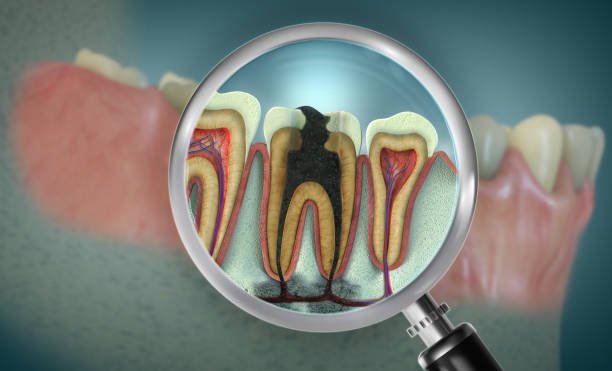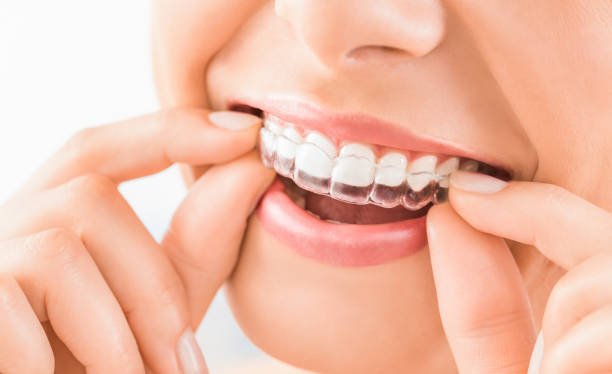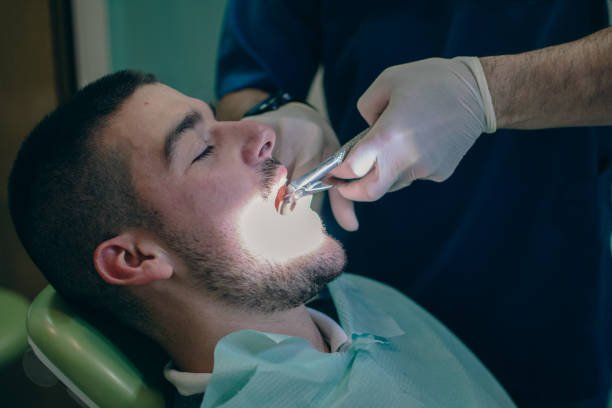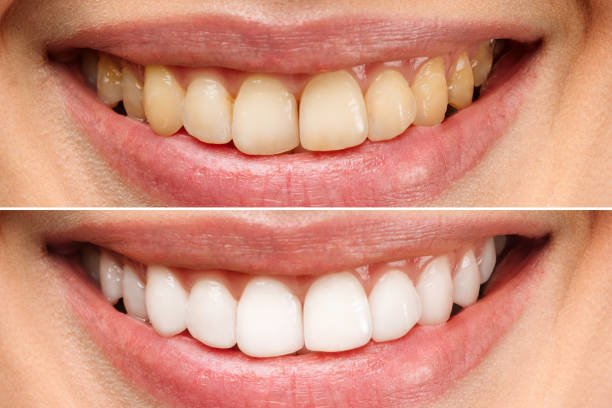
Root canal therapy is a dental procedure used to treat and save a tooth that is severely decayed or infected. It involves removing the damaged pulp (nerve and tissue) from inside the tooth, cleaning and disinfecting the canal, and then filling and sealing it. This helps relieve pain, stop the infection, and preserve the natural tooth. A crown is often placed afterward for protection. Root canal therapy is a safe, effective alternative to tooth extraction and restores normal function.

Dental implants are a permanent solution for replacing missing teeth. The procedure involves inserting a titanium post into the jawbone, which acts as a root for a replacement tooth or crown. Over time, the bone fuses with the implant in a process called osseointegration, creating a stable foundation. Implants look and function like natural teeth, improve bite strength, and prevent bone loss. It is a popular choice for people seeking long-term tooth replacement with minimal maintenance.

Crowns and bridges are dental restorations used to restore damaged or missing teeth.
Crowns are caps placed over a damaged or decayed tooth to restore its shape, size, and function, improving its appearance and strength. They are often made from porcelain, metal, or a combination of both.
Bridges are used to replace one or more missing teeth by anchoring artificial teeth (pontics) to adjacent natural teeth or implants. This fills the gap, restores function, and prevents remaining teeth from shifting.
Both options improve chewing, speaking, and overall dental health, providing a durable and natural-looking solution.

Braces and aligners are orthodontic treatments used to straighten teeth, improve bite, and enhance overall dental health.
Braces consist of metal or ceramic brackets attached to the teeth, connected by wires and rubber bands. These gradually shift the teeth into the desired position over time. Braces are highly effective for complex alignment issues.
Aligners, like Invisalign, are clear, removable trays that gradually move teeth into place. They are more discreet and comfortable than traditional braces, making them popular for adults and teens with mild to moderate alignment issues.
Both treatments help improve aesthetics, bite function, and oral health, with the choice depending on the severity of the case and patient preference.

Tooth extraction is a dental procedure where a tooth is removed from its socket in the bone. It is typically performed when a tooth is severely decayed, damaged, or causing pain due to infection, crowding, or other dental issues. The procedure is done under local anesthesia to numb the area, and in some cases, sedation may be used for a more comfortable experience. After the extraction, patients may need to follow specific care instructions to ensure proper healing and avoid complications, such as infection or dry socket.

Teeth whitening is a cosmetic dental treatment that lightens the color of teeth by removing stains and discoloration. It can be done in a dental office using professional-grade bleaching agents, or at home with custom trays and whitening gels provided by a dentist. Over-the-counter products like whitening strips are also available but may be less effective. Teeth whitening is ideal for individuals with yellowish or stained teeth and can significantly enhance the smile’s appearance. Results vary based on the method used and the individual's oral care habits.

Gum disease treatment focuses on preventing further damage and restoring gum health. The two main stages of gum disease are gingivitis (early stage) and periodontitis (advanced stage).
Gingivitis Treatment: Early gum disease is treated with professional cleaning to remove plaque and tartar buildup, followed by improved oral hygiene at home.
Periodontitis Treatment: In more severe cases, treatments may include deep cleaning (scaling and root planing) to remove bacteria from the gum pockets, antibiotics to control infection, or even surgery to repair damaged gums and bone.
Early detection and regular dental check-ups are essential for preventing gum disease progression and preserving overall oral health.

Full mouth rehabilitation is a comprehensive dental treatment to restore the function and appearance of the entire mouth. It combines procedures like crowns, bridges, fillings, implants, orthodontics, and cosmetic treatments like veneers or whitening. It also addresses gum disease and bite problems. Each treatment plan is customized to the patient’s needs, aiming to restore oral health and improve the smile. The goal is to enhance both function and aesthetics, addressing tooth loss, decay, and misalignment for a healthier mouth.